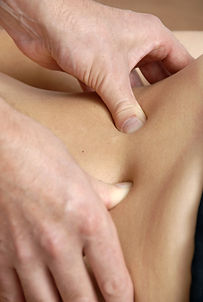top of page



Tuina Chinese Massage
What is Tuina Chinese Massage?
Tuina Chinese Massage, which predates acupuncture, is a tried and tested system of healthcare. It literally means tui (push) and na (grasp) and after 2,000 years of evolution, refinement and research it continues to be a vital part of their primary healthcare system being widely used in hospitals throughout China.
Both Acupuncture and Tuina use the same theory and have a very positive model of good health and function. Both look at pain and illness as signs that the body is out of balance and that pain occurs when the free flow of Qi (or vital energy) is interrupted. There are many reasons for this including emotional and physical stress, poor nutrition, infection or physical injury. Classical Chinese Medicine involves treating the patterns of disease and dysfunction and focusing treatment on the individual rather than their illness. Diagnosis is highly personalised and involves careful consideration of how symptoms inter-relate and how seemingly unconnected symptoms weave together into a “Pattern of Disharmony”. The practice of Tuina can focus on painful areas, acupuncture points and acupuncture channels and its overall aim is to restore the body’s equilibrium. Each treatment may use additional modalities depending on the condition including moxibustion (or moxa), Gua Sha and Cupping (Ba Guan).


Yin style – a smaller range of techniques are used, with less obvious outward physical activity – the practitioner working from a still, relaxed, centered and grounded place. The techniques are applied gently, slowly and subtly to an area, channel or point for a prolonged period of time in order to soothe, calm, sedate and nourish.
Yang style – this is a dynamic and physically demanding style that is often practiced in the Tuina departments hospitals in China. Points and channels are stimulated strongly until the patient feels muscle knots release and includes techniques such as mobiliisation and manipulation familiar to sports massage, osteopathy and chiropractic. Techniques flow and move rhythmically from one to another – moving, warming, invigorating dispersing, dredging and clearing.
Brief history of Tuina
Archaeological studies have unearthed evidence of Tuina dating to around 2,700 BC making it probably the forerunner of most other forms of massage and bodywork. As with Acupuncture, the famous ancient text on Chinese Medicine the Huang Di Nei Jing (The Classic of Internal Medicine of the Yellow Emperor), includes the use of massage techniques and how they should be used to treat conditions.
During the Sui Dynasty (581-618 CE) and subsequent T’ang (618-906 CE), Song (906-1279 CE), Yuan (1280-1368 CE) and Ming (1368 – 1644 CE) dynasties there was a continuous department of massage therapy in the Office of Imperial Physicians where the massage techniques were further developed, systemised, analysed and refined – becoming the major form of treatment in the bone-setting department at the Institute of Imperial Physicians.
With increasing Western influence, and its emphasis on symptomatic treatments, classical Chinese Medicine began to suffer. During the Long March, where Western trained physicians and medicine (including anaesthetics) were in short supply, Classical Physicians came to the rescue achieving great results with very limited resources. Following WWII, and the subsequent embargo by the West, Mao Ze Dong encouraged the spread of Chinese Medicine in order to provide health care to a large population. In the mid 1950s he brought all the clinicians to areas of excellence – including Beijing and Shanghai, where classical concepts were integrated with modern concepts of anatomy and physiology.
Types of Tuina
Depending on the condition being treated and the practitioner’s background, the style of Tuina treatment can vary from a vigorous deep-tissue massage to a subtle energetic treatment not unlike Reiki or Cranio-sacral therapy.
However, Tuina is more than just a massage; practitioners are skilled both at manipulating joints and muscles to relieve musculoskeletal pain and stiffness and, by utilising the points and channels used in Acupuncture, direct the flow of Qi within the body to treat deeper seated conditions.
Each practitioner will develop their own style. However, Tuina techniques broadly fall into two categories – Yin and Yang – with most clinicians combining techniques from both depending on the requirements of the patient.
bottom of page





